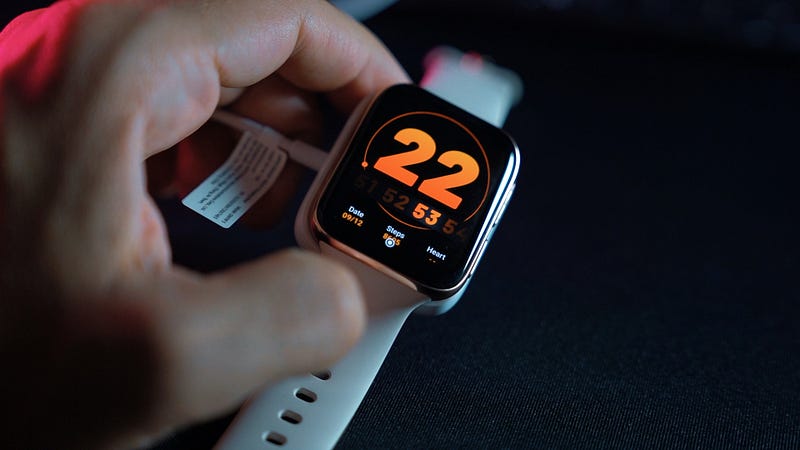Yes, My Fitbit Has Really Made Me Healthier. Here’s Why and How

Photo by Onur Binay on Unsplash
The pleasure of working from your pajamas, wrapped in your bedsheets comes with its own drawbacks. Ever since the whole world has started working from home, inactivity has been a constant challenge.
Before the pandemic hit, I never thought I’d need fitness trackers. I was confident that I was hitting the 10,000 step goal every day. I went to the gym, always used public transportation, and never used any vehicle for short distances.
As a college student, even though I was out of the house every day, I never went to classes — which means I didn’t spend a bunch of time sitting like most of my peers. Clearly, inactivity wasn’t an issue for me.
Until it was.
Soon after lockdown hit my city, I noticed my mother had a Fitbit Versa Lite but used it for nothing but checking the time. On explaining to her how she was grossly underusing the device’s capabilities, she gladly gave it over to me, saying “I’d never track all that information!”
So with a free watch and tons of metrics to track I was quite excited. The excitement soon turned into guilt when I noticed my daily step count.
I averaged 2,000 steps a day. As you might guess, it was not easy to digest. Motivated to take this up to the magic number of 10k (which I know may or may not be the best goal), I pledged to walk every day.
Walking for the sake of it, however, was never my cup of tea. Yet, the days when walking was an indispensable part of my life were over. To complete my steps, especially in a lockdown, I had to set some time aside to walk every day.
But first, let me tell you why chasing this goal can do wonders for your physical health.
The Most Effective Weight Loss Method
My good friend and writer Neeramitra Reddy noticed how he’d gain weight every time he went home for vacations and how he’d lose it all in a few weeks on coming back to college. This is the same epiphany I had. But since he’s much more intelligent than I, he also explains why this is the case.
It has to do with your Total Daily Energy Expenditure or TDEE. In simpler words, it’s the number of calories you burn in a day. If your caloric intake is more than your TDEE, you’ll gain weight. And the opposite is true as well.
Now, here’s where it gets interesting — and mind you, this is the mistake most people (even I) make.
It’s easy to think that even though we’re at home, we’ll be fine if we just continue with our workouts. “Who needs a walk when I can train with weights 5 times a week?”
This argument seems plausible but is deceptively wrong. Here’s why.
Studies show that exercise accounts for only 2–10% of your TDEE. The rest of it comes from:
- Basal Metabolic Rate (BMR) (~50% of your TDEE) —the energy required for bodily functions such as respiration, cell repair, brain functions, etc.
- Thermic Effect of Food (BMR) (~8–15% of your TDEE) — the energy required to digest and assimilate the consumed nutrients, and
- Non-Exercise Activity Thermogenesis (NEAT) (~15 to 50% of your TDEEs) — your daily physical activity apart from exercise.
The last point reveals why Neeramitra and I, lost much more weight in college than sitting at home — even though my diet and workout habits didn’t change at all!
Fitbit To The Rescue
Once I knew why those extra steps were important, I started tracking and meeting my goals every day. While changes in the weather varied my progress, most days I reach my 10,000 step goal. If not, I always try to reach at least 8,000 steps.
This didn’t happen overnight. I started by setting small goals and I recommend you do the same.
Let’s say you do 3000 steps every day. To increase that to 10,000, you’ll have to spend 1–1.5 hours walking (or maybe more). You may not be willing to invest so much time upfront in walking. I couldn’t.
So start slow and set appropriate goals. Aim first for 5000 and when you hit it every day for a week, increase the goal.
The point is to wear your tracker (or use only a pedometer app) to see where you’re at and then deciding your goal.
The gamification aspect of fitness trackers is the best part of the whole process. There are badges, achievements, and the opportunity to compete with friends. While I averaged 10,000 steps every day, once I enrolled myself into a challenge, I was easily reaching 18–20k daily. So use the game and make it fun.
Integrate Walking In Daily Life
When I thought about how I reached my steps goal every day, I realized that I don’t spend that much time “just walking.” Meaning, instead of blocking time just to hit my goal, I incorporated walking into my daily schedule.
This means taking more calls while walking, stretching and warming up regularly while working, not using the car as much, going shopping on foot, etc.
Busy executives around the world go for the same strategy. Consider Jack Dorsey who used to walk 5 miles to his office every morning. Jeff Weiner also always prefers an outdoor view and will take “walking 1:1 over office meetings any day.”
And while we’re only talking about the physical benefits of walking, the mental and emotional benefits are equally important.
The best part about this is it doesn’t take much of your time. Yet, the return it generates is tremendous. Remember, since NEAT can account for 50% of your TDEE it might just be the magic pill you’re looking for.